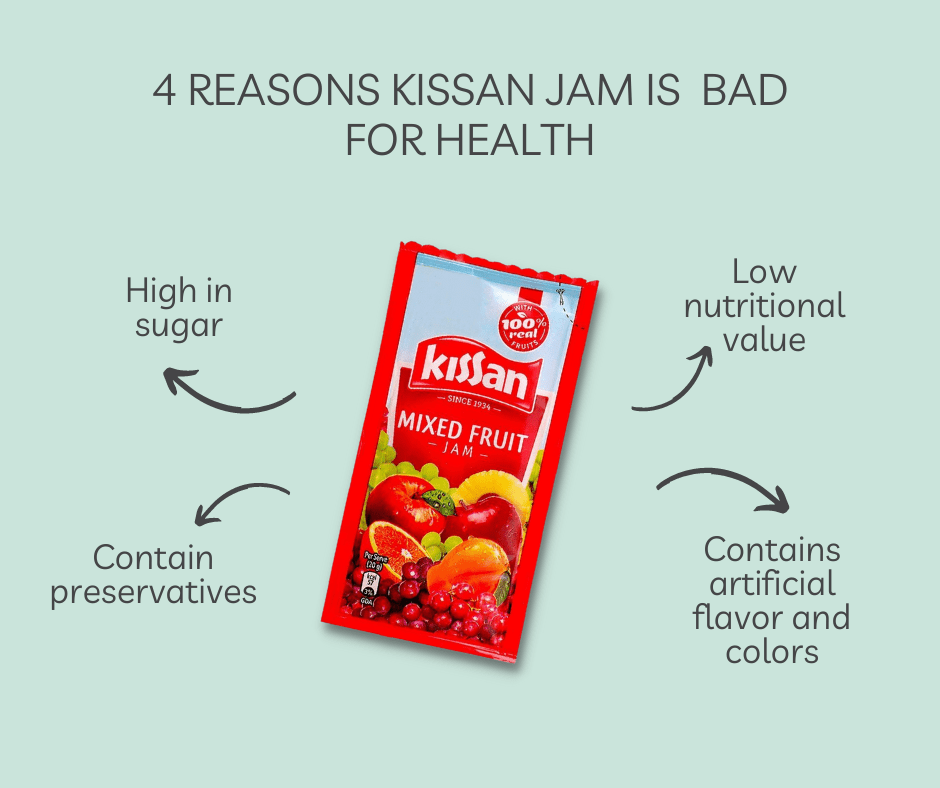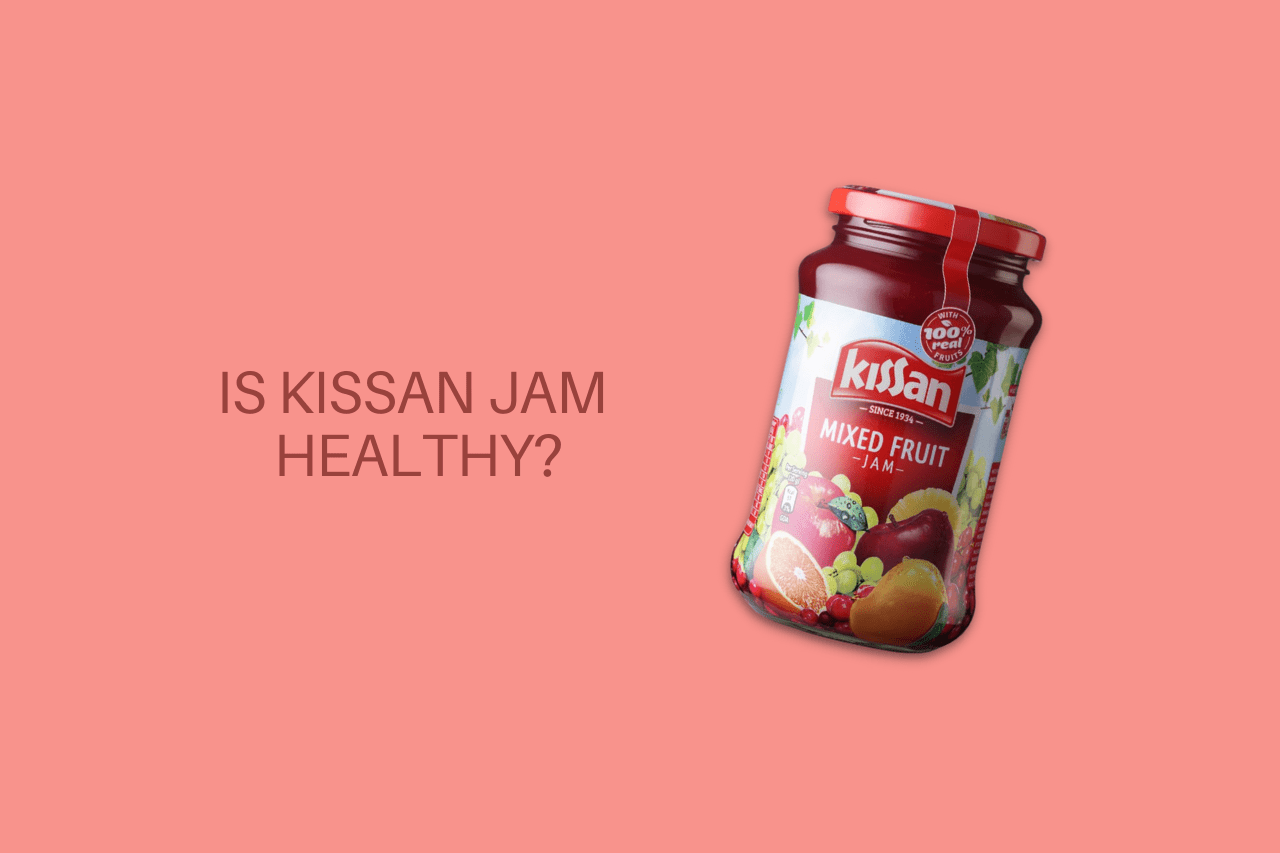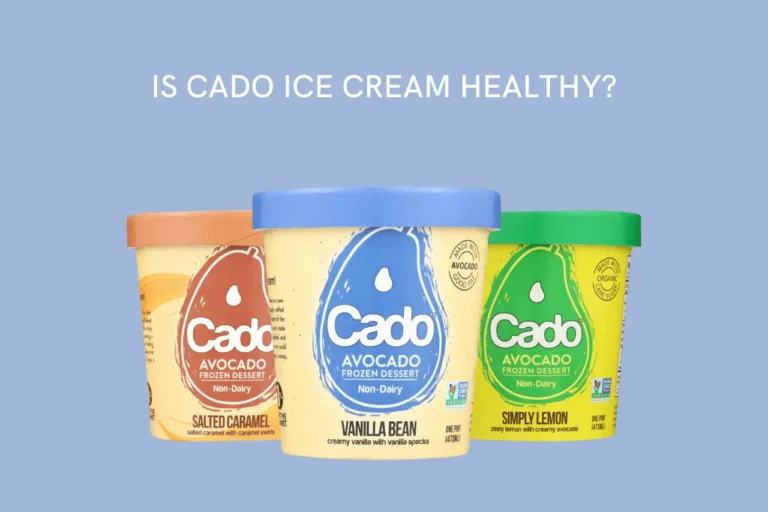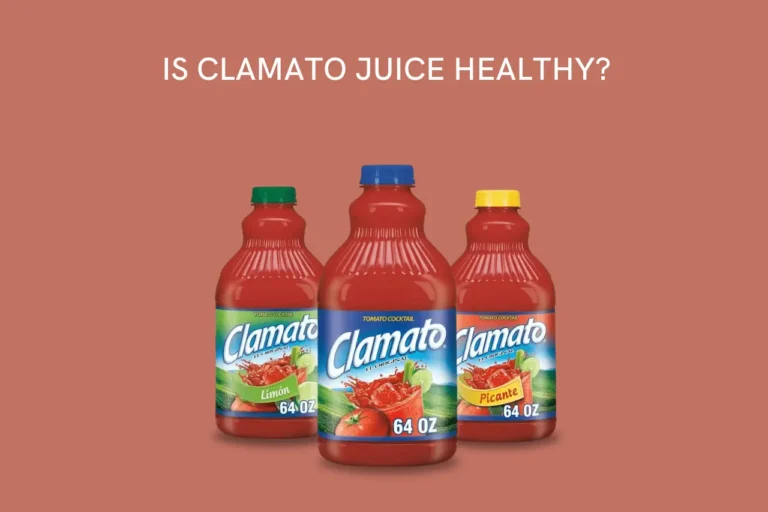Kissan jam has been a staple in Indian households for generations. Whether you’re eating bread, roti, or paratha, adding Kissan jam gives these dishes an extra level of deliciousness.
It’s undeniable that it turns bland food into an amazing and delicious meal for your kids. And it’s affordable, starting at just 2 Rs per sachet.
However, marketed as made from 100% real fruits, Is kissan jam really healthy for you?
The answer is No.
From containing plenty of sugar to being low in nutritional value, many reasons make Kissan jam bad for your health.
I have compiled a list of 4 reasons why eating Kissan jam is not worth your health.
But first, let’s look at its nutritional value and ingredients.
Also read: The Truth About Oats Maggi: Is It Really Healthy?
Nutritional value of Kissan jam
A one serving (20g) of Kissan jam contains:
- Calories: 57
- Carbs: 14.2g
- Sugar: 13.6g
- Protein: 0.1g
- Fiber: 0.2g
- Sodium: 10mg
- Vitamin A: 94.5ug
- Vitamin B6: 0.23mg
- Vitamin B7: 3.7ug
- Zinc: 0.89mg
Ingredients in Kissan jam
Kisaam jam has four main flavors: Orange Maramalde, Mango Jam, Mixed Fruit Jam, and Pineapple Jam. The key ingredients that are used among all flavors include:
- Sugar
- Fruit pulp(based on flavor)
- Thickener(E440)
- Acidity regulator(330)
- Preservatives(202, 211, 223)
- Synthetic food color(E122)
- Artificial flavors(Raspberry, pineapple and strawberry)
4 Reasons why Kissan jam is not healthy for you

It contains plenty of sugar
The primary reason that makes Kissan jam unhealthy to consume is its high sugar content.
One tablespoon of Kissan jam (20g), which is also the recommended serving, contains 13.6g of sugar – this is equivalent to three and a half teaspoons of sugar. To put this into perspective, even Coke and Pepsi don’t contain this much sugar.
You might think that the high sugar content in Kissan jam is due to the addition of fruit pulp, but this is not the case. Of the 13.6g of sugar, only 1.1g is from fruit.
If you give your child two tablespoons of Kissan jam as part of a meal, they consume 27.2g of sugar. This is well above children’s daily limit of 24g of sugar.
A single sachet of Kissan jam (2 Rs, 11g) which most women include in their child’s lunchbox, contains around 7g of sugar.
Feeding your child this much sugar, in the name of ‘fruit jam’, increases the risk of many health problems such as weight gain, diabetes, obesity, and sugar addiction.
| Jam flavor | Sugar per serve (20g) |
|---|---|
| Mixed fruit | 13.6g |
| Orange | 14.5g |
| Mango | 13.6g |
| Pineapple | 14.2g |
It is low in nutrition value
Though marketed as made from 100% real fruits, Kissan jam is low in nutritional value compared to whole fruits.
This is because fruits used in Kissan jams undergo hefty processing, which strips them of their macronutrients, vitamins and minerals.
For example, 100g whole orange contains 1g of protein and 2.4g of fiber. However, looking at the nutrition label of the Kissan jam orange Maramalde flavor, you will find that it has an almost negligible amount of protein and just 0.5g of fiber.
Though you might find some nutrients like vitamin A, B3, B6, B7 and zinc listed on the mixed fruit flavor, they are not from the fruits. They are added synthetically to improve the nutritional profile.
Additionally, fruits are a great source of nutrients like vitamin C, E, magnesium, phosphorus and folate, which aren’t mentioned on the Kissan jam nutrition label and possibly because they don’t exist in it.
It is full of preservatives
As the name suggests, preservatives preserve food from mould and bacteria. However, these preservatives can sometimes harm health, especially when you consume them in high amounts.
Kissan uses three different preservatives among their Jams. These include Potassium sorbate (202), Sodium benzoate (211), and Sodium metabisulfite (223).
Potassium sorbate in food is used to prevent the growth of microorganisms. However, some sources show that excess intake of it can cause severe side effects like asthma, digestive problems and skin and eye irritation[1].
In addition, consuming sodium benzoate can increase the risk of inflammation, obesity, ADHD and allergies.[2][3][4]
Moreover, excess intake of Sodium metabisulfite may lead to nausea, vomiting, diarrhea, abdominal pains, depression etc[5].
It has artificial flavors and colors
The processing not only destroys the fruits’ nutrients but also eliminates the fruit’s natural flavors. As a result, manufacturers need to add artificial flavors to jams to make them taste similar to actual fruits.
For example, Kissan jam contains three artificial flavors: raspberry, pineapple and strawberry.
While artificial flavours are mostly safe, in some people, they can cause unwanted effects such as high blood pressure, obesity, infertility, allergies and other issues[6].
In addition, the red color of Mixed fruit Kissan jam is not because of the color of the fruits but due to artificial coloring (E122), also called Azorubine.
While the European Union approves this food color (EU), some sources claim it can worsen asthma. Also, when taken in combination with benzoates (which are present in Kissan jam), it can induce hyperactivity in children[7].
What’s more shocking is that this food color is banned in countries like USA, Norway, Sweden and Japan.
Is Kissan jam good for weight loss?
Since Kissam jam is processed, high in sugar, and packed with preservatives and flavors, it is not good for weight loss.
If you want to keep your weight under control, you should either eat Kissan jam in moderation and exercise or avoid it entirely if you cannot be active enough.
Final words
While Kissan jam may be a tasty treat that turns bland food into delicious food, it’s not healthy to consume(especially on a regular basis).
It is high in sugar, that can result in weight gain, diabetes and heart disease. In addition, the processing removes all the natural nutrients and flavors from the fruits.
In simple words, Kissan jam is an artificially processed jam with 70% sugar in each serving and almost negligible nutrients.
Found this information helpful? Make sure to share it on social media.
Here are a few other posts that might also be helpful for you.





